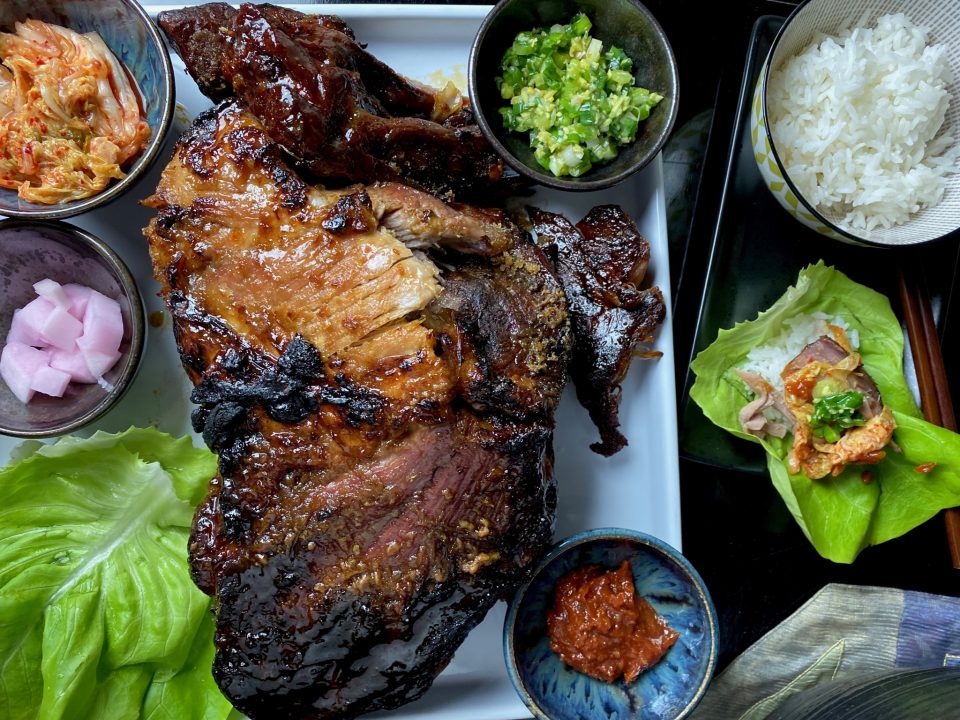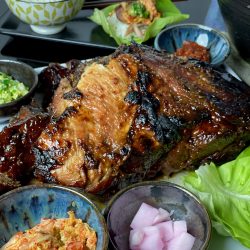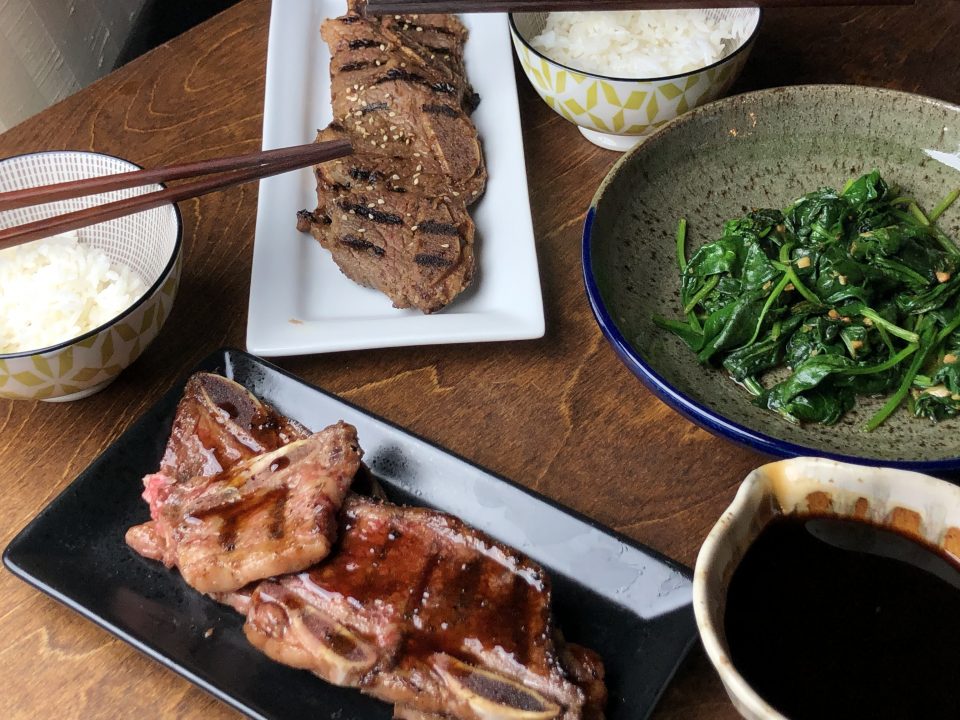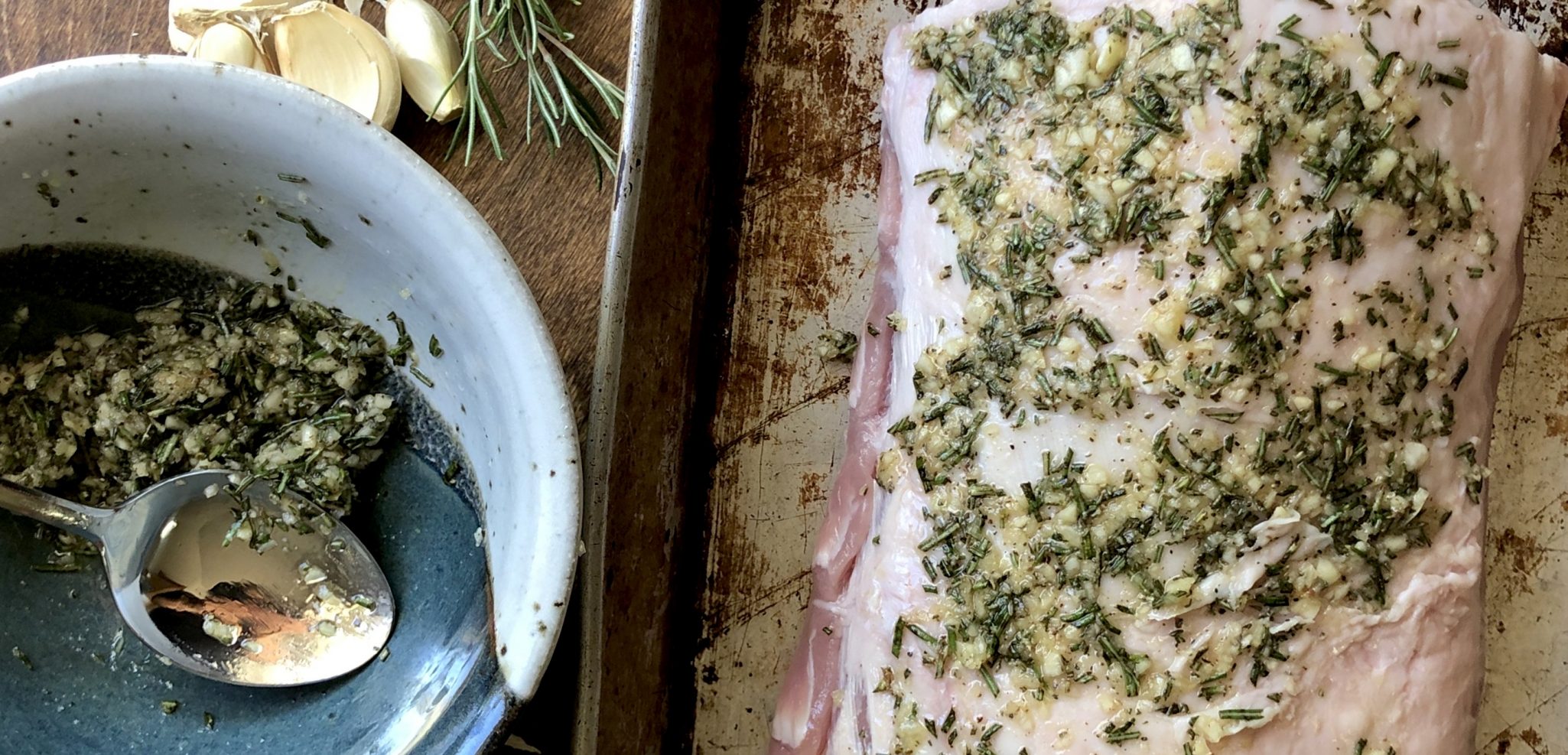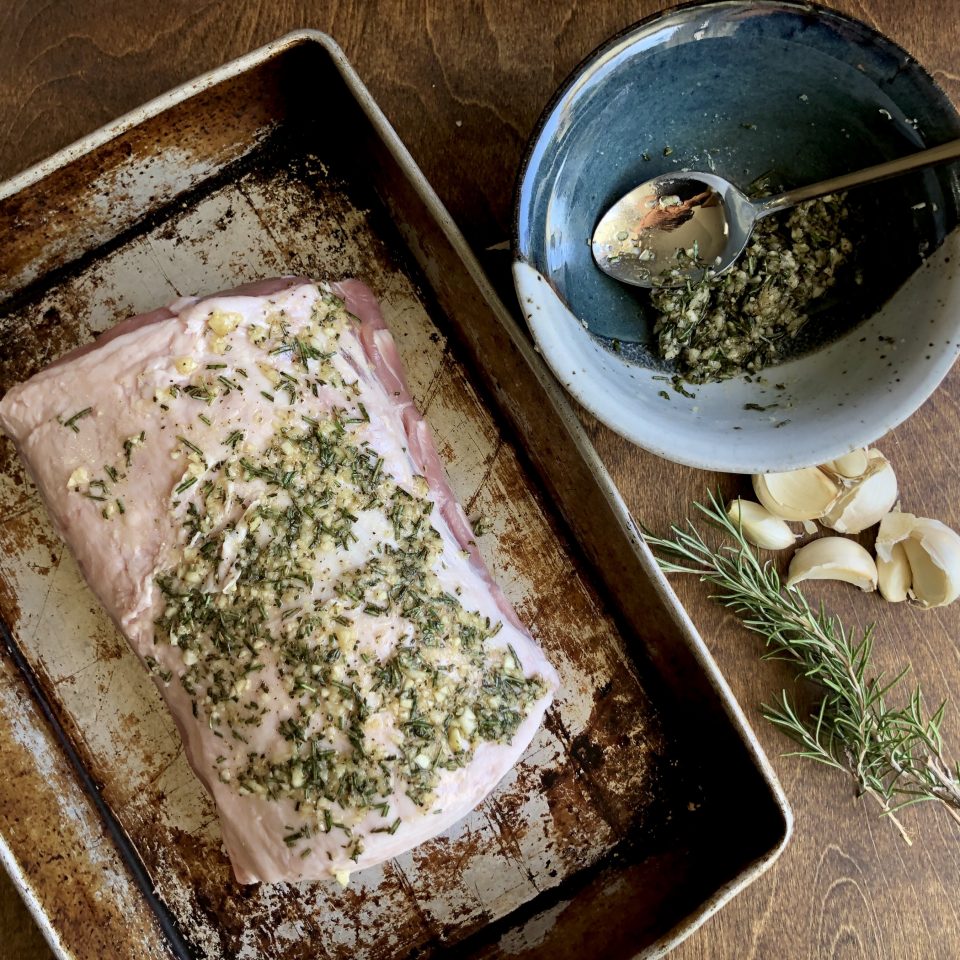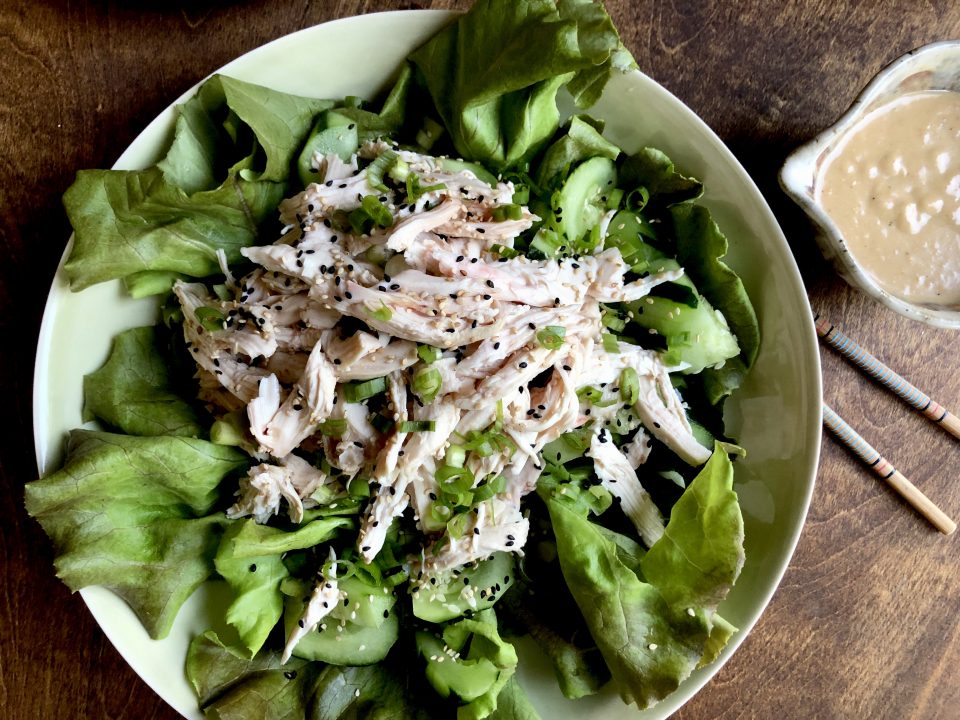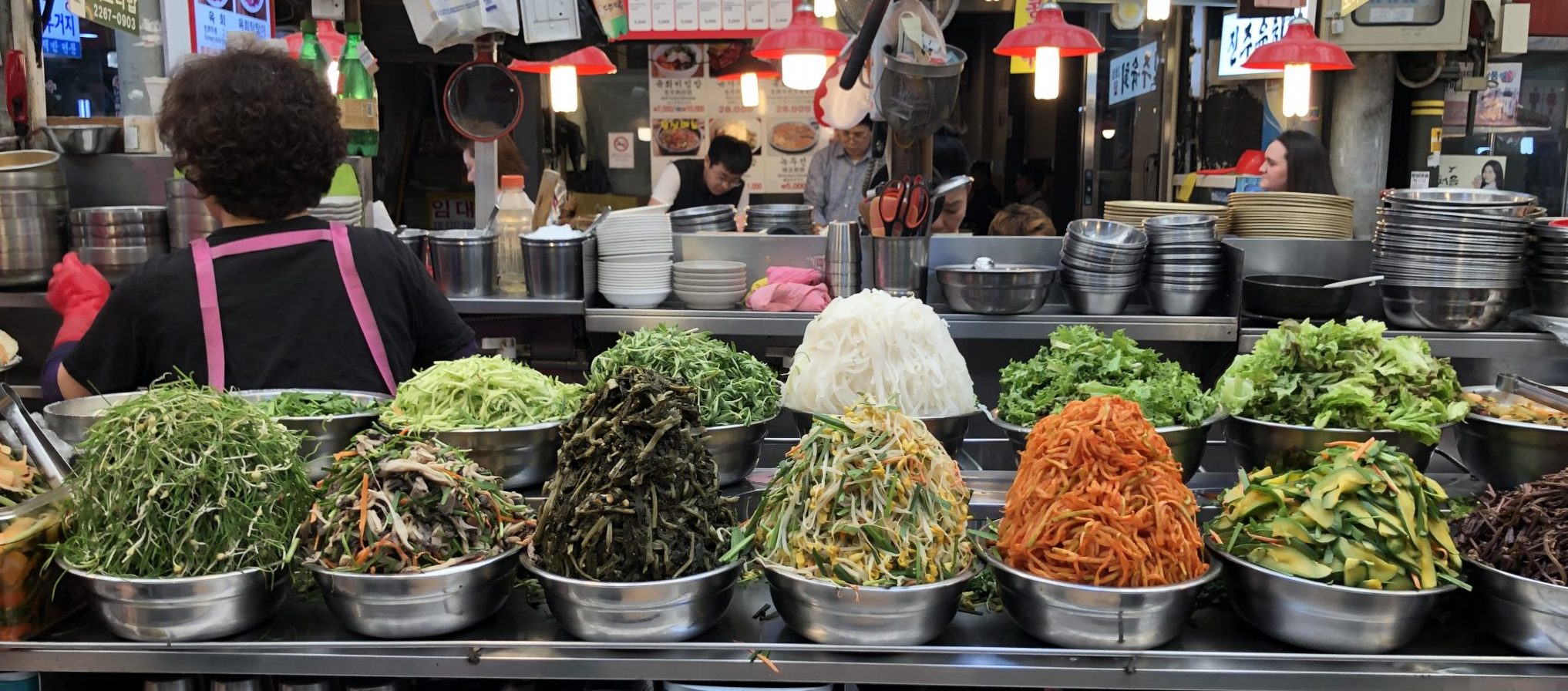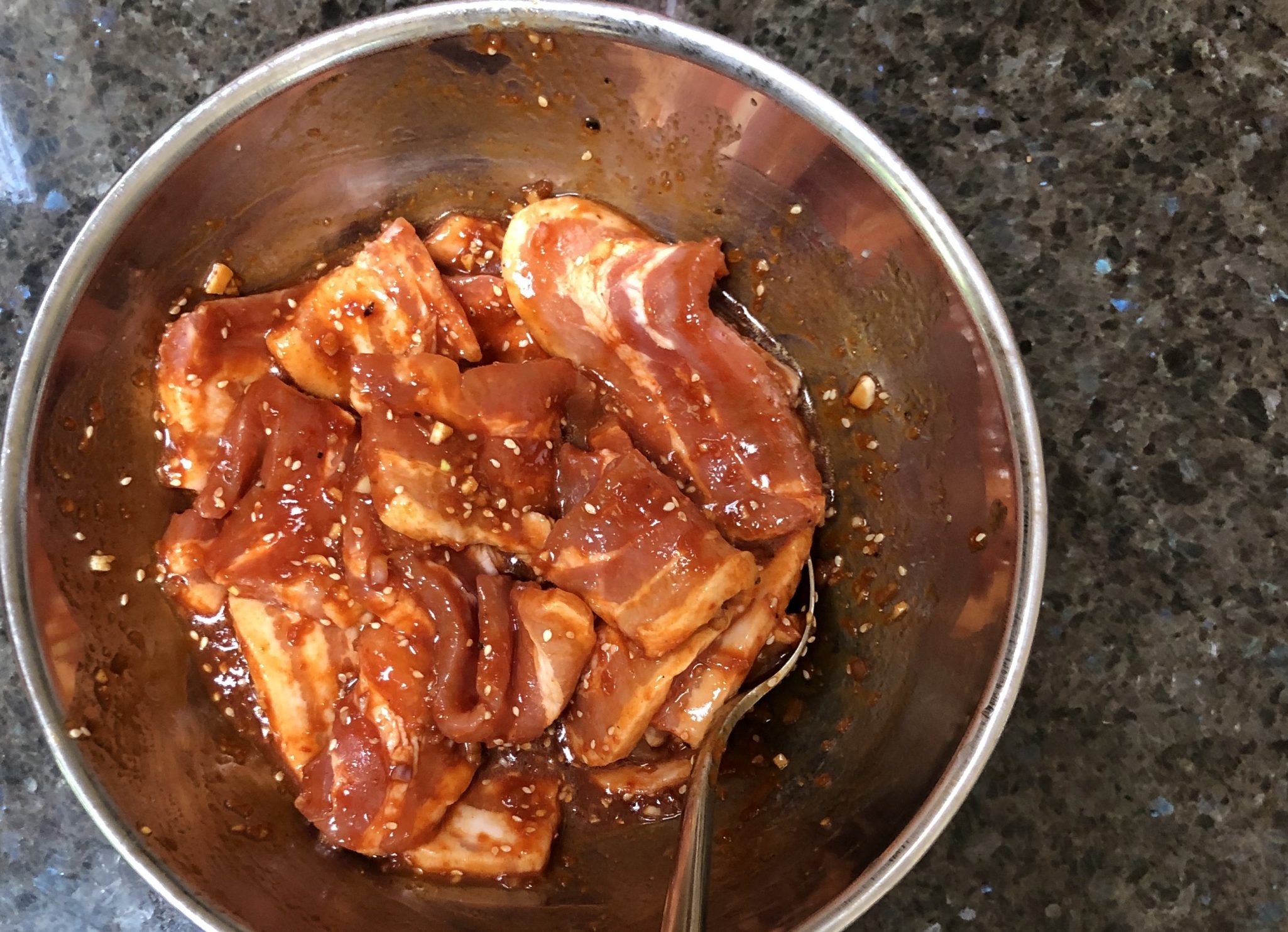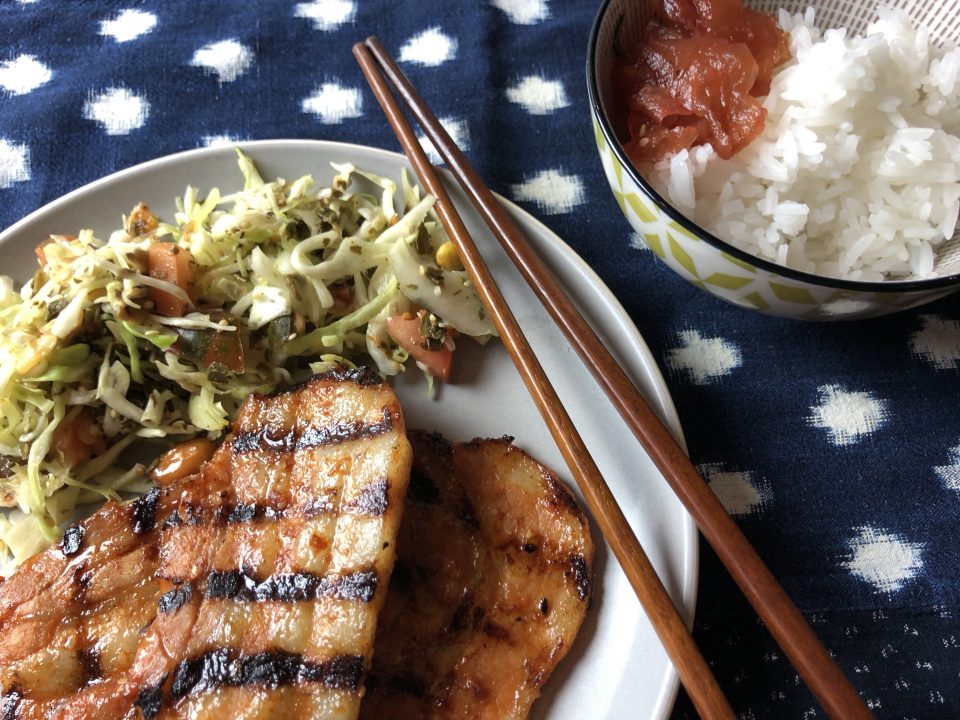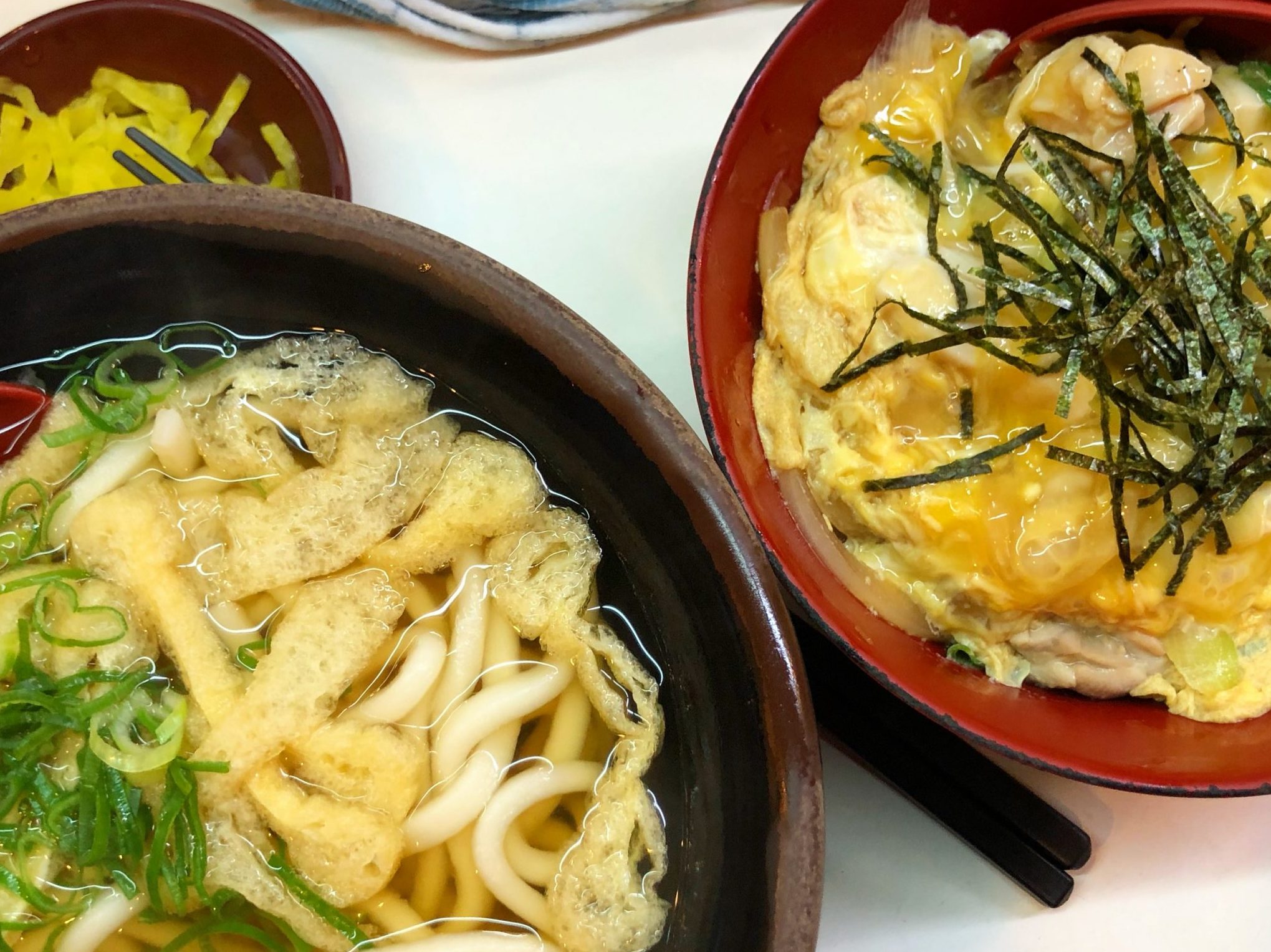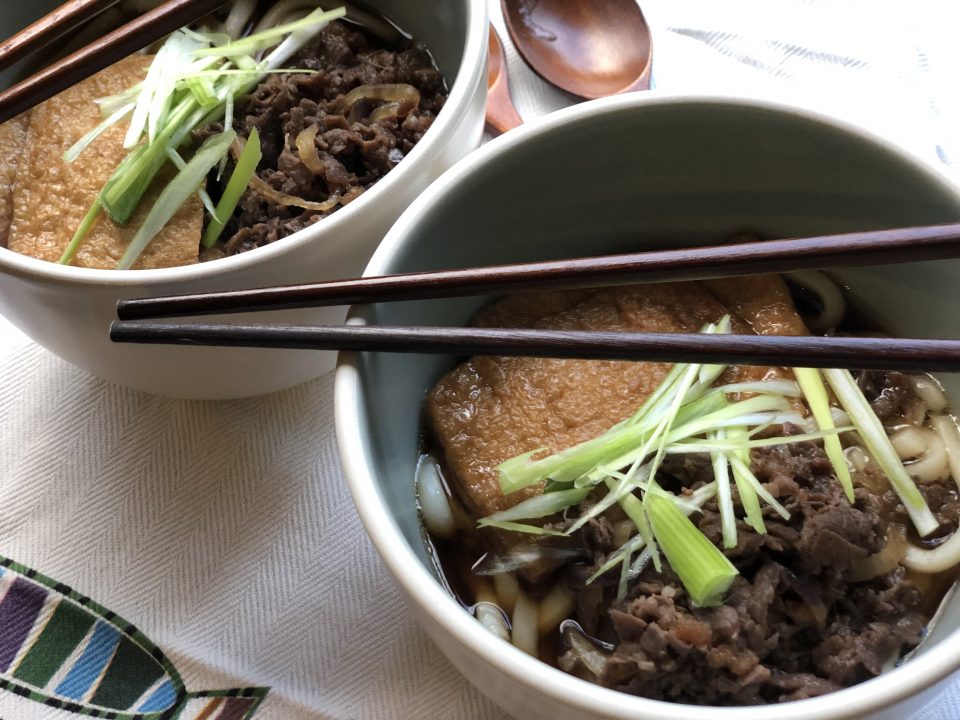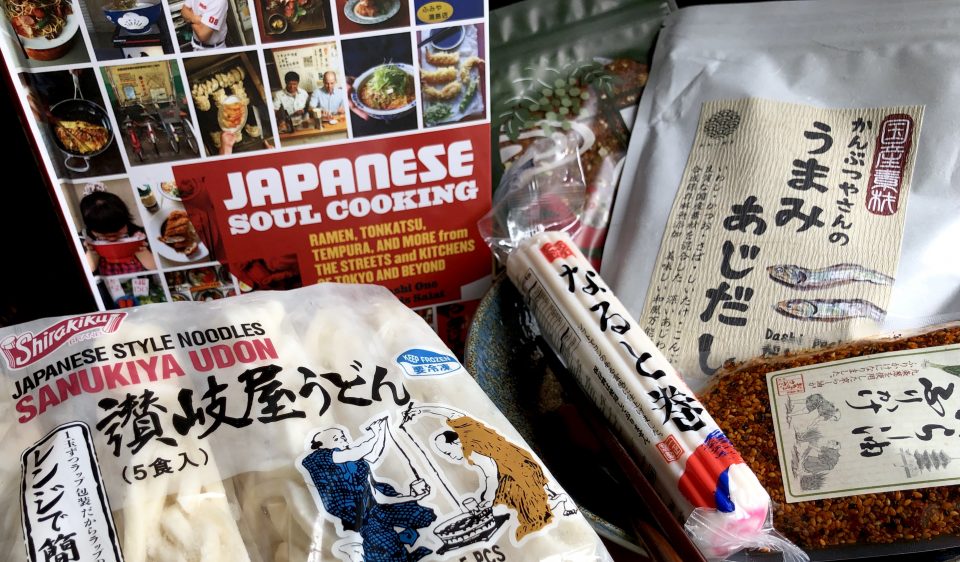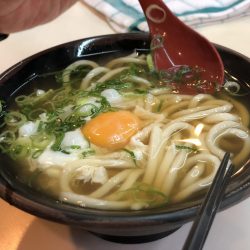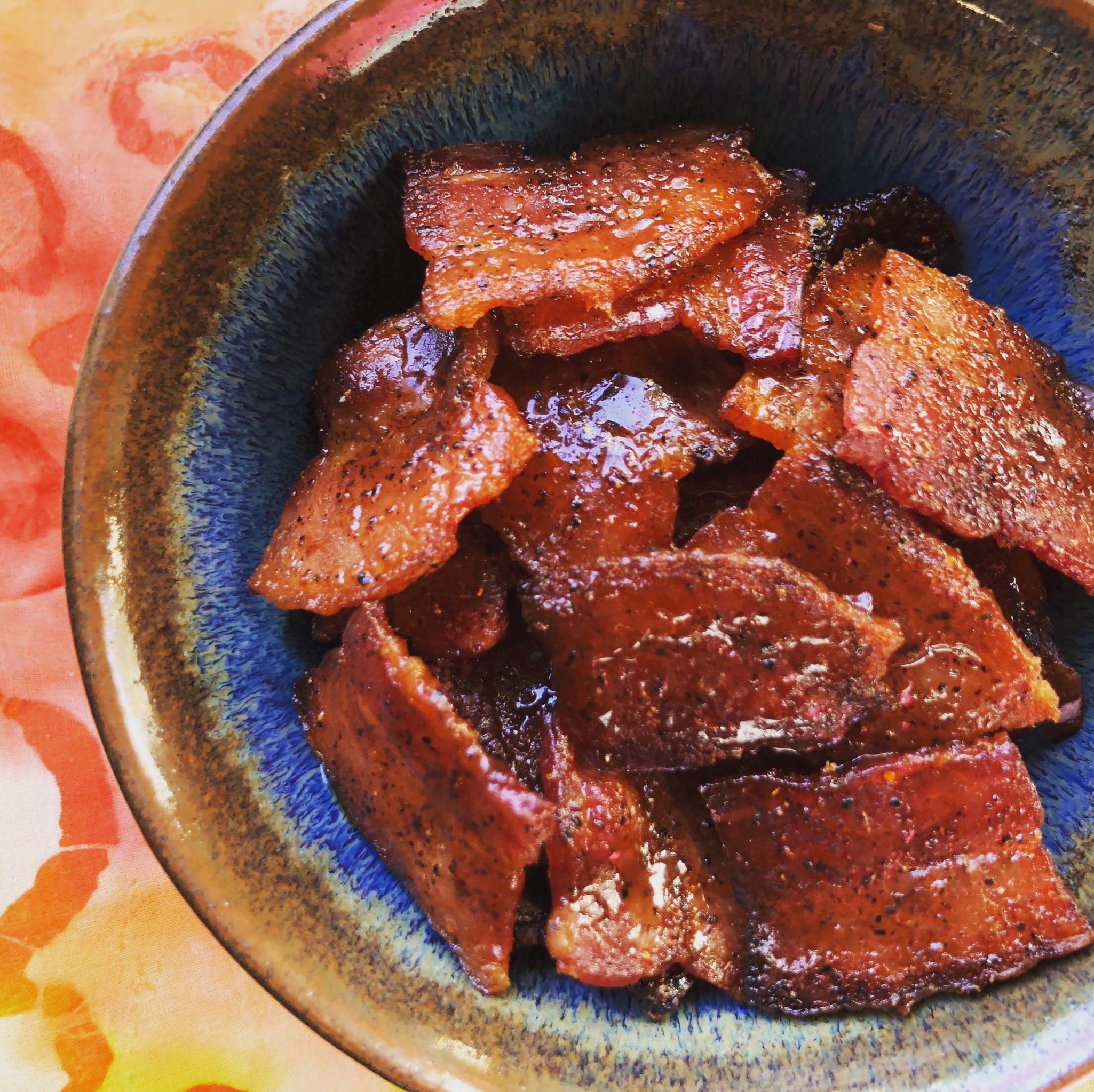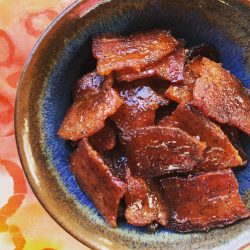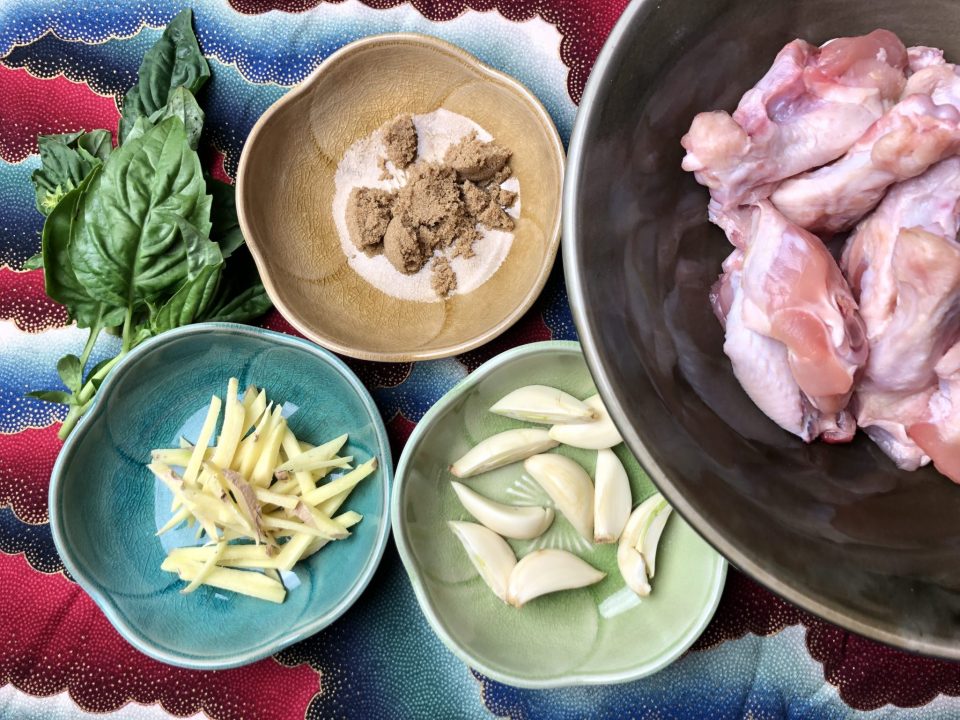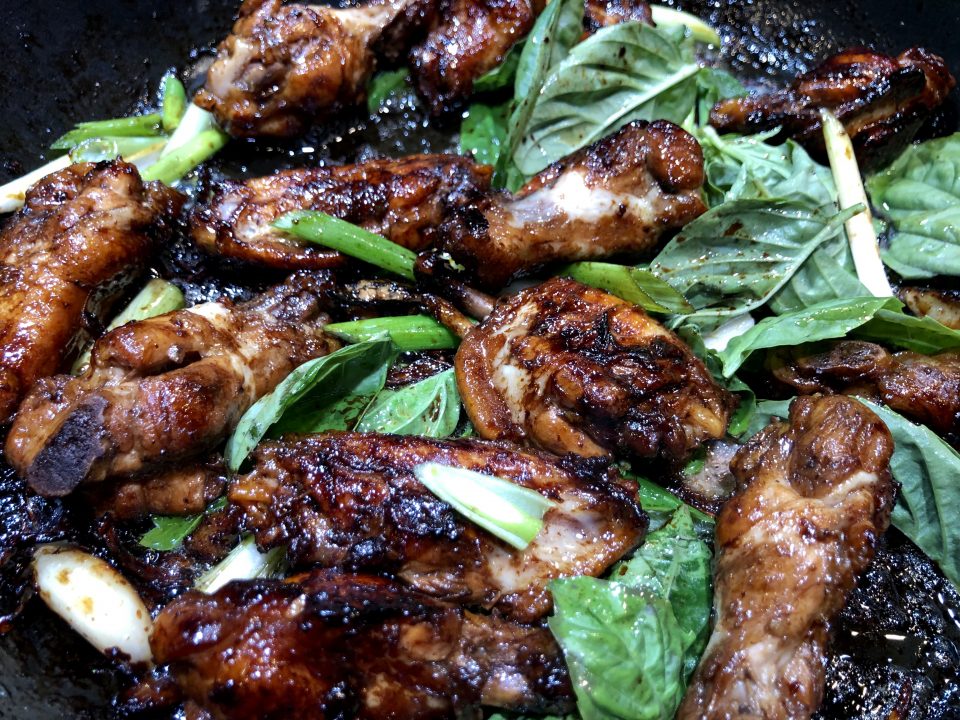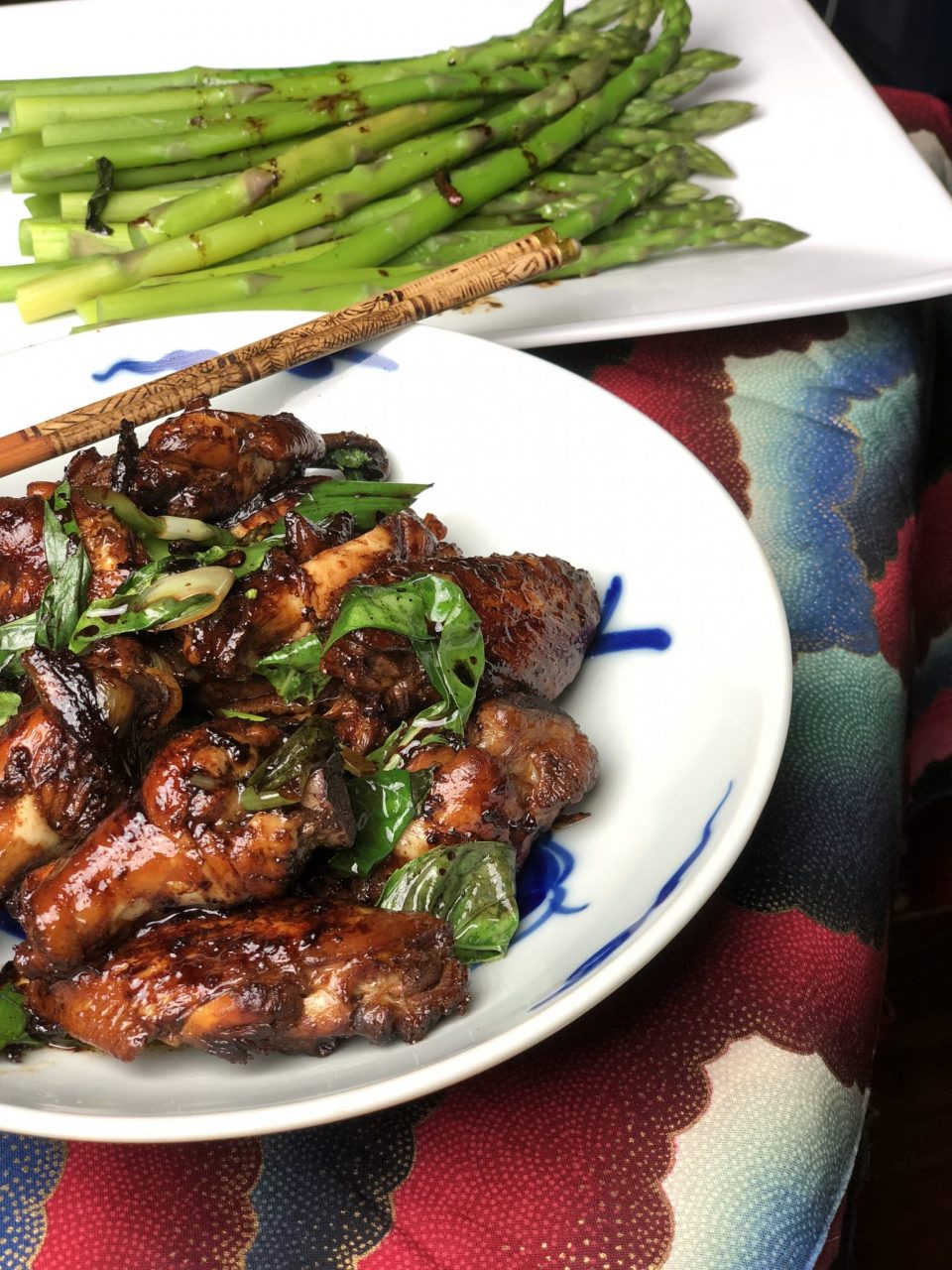
Soy Sauce Chicken (See Yao Gai-s Soon)
Growing up in Chinatown I took for granted that everyone had access to fresh vegetables, fish, poultry and meat. If only I had an iPhone back in the day to capture the pictures of daily life in my Chinatown. I’d have pictures of crates filled with live chickens sitting on the sidewalk, tanks filled with live fish and crabs, and baskets filled with just picked greens.
Many of the markets had delis, their counters loaded with trays of fried noodles, stir-fried vegetables, and stews. Storefront windows filled with roasted ducks, chickens and different sausages hung to entice passersby. Whole roasted pig hanging on a hook with its skin roasted to a crispy rich caramel brown. Shoppers clamored in line while the butcher sliced off chunks to dole out. 
Fifteen minutes before my parents closed their office for the day, Dad would hurry down to the shops to buy fixings for that night’s dinner. What he cooked was always predicated on what was fresh in the markets.
Our dinners consisted of my Dad’s dishes-squash soup, stir fried beef and greens or steamed fish with green onions and ginger and pre-made dishes bought from one of the many delis in Chinatown. Dad would survey the window at Ping Yuen Market and select a roast duck or chicken, or pick a piece of Crispy Skin Pork or bbq pork . Luckily many of these deli delights like Whole Poached Chicken and bbq pork, even crispy skin roasted pork can be made at home. I gave it a try with a small piece of pork belly, and was surprised by the results. Now I can make it at home.
Soy Sauce Chicken

It never occurred to me to make Soy Sauce Chicken at home, it was too easy to head to my favorite Chinese deli and pick one up. Staying at home has made me rethink “what can I make at home?” Time to tackle Soy Sauce Chicken. The good news is it’s easy! I googled Soy Sauce Chicken and found a recipe on The Woks of Life (an amazing Asian family cooking blog). A few tweaks to their recipe and boom, no need to head to that Chinese deli anymore. Delicious homemade Soy Sauce Chicken made by yours truly
Here’s the hard part. Ingredients
The seasonings include dark and regular soy sauce, star anise, sugar, cinnamon, rice wine. Dark soy sauce has molasses which makes it sweeter than regular soy sauce. Pictured in the left, back is rock sugar which I used along with granulated sugar. You could use just granulated sugar or a combination of white and brown sugar. Star anise is not my favorite so I cut back to 1-2 pieces and added half of a cinnamon stick instead. Next time I will throw in 1-2 cloves in the poaching liquid. Feel free to play around with the spices to make it your own, although stick to the spices in Five Spice Powder as a guide -Cinnamon, Star Anise, Fennel, Clove, Sichuan Peppercorns. Keep in mind that all of these spices are pretty assertive, a little goes a long way.
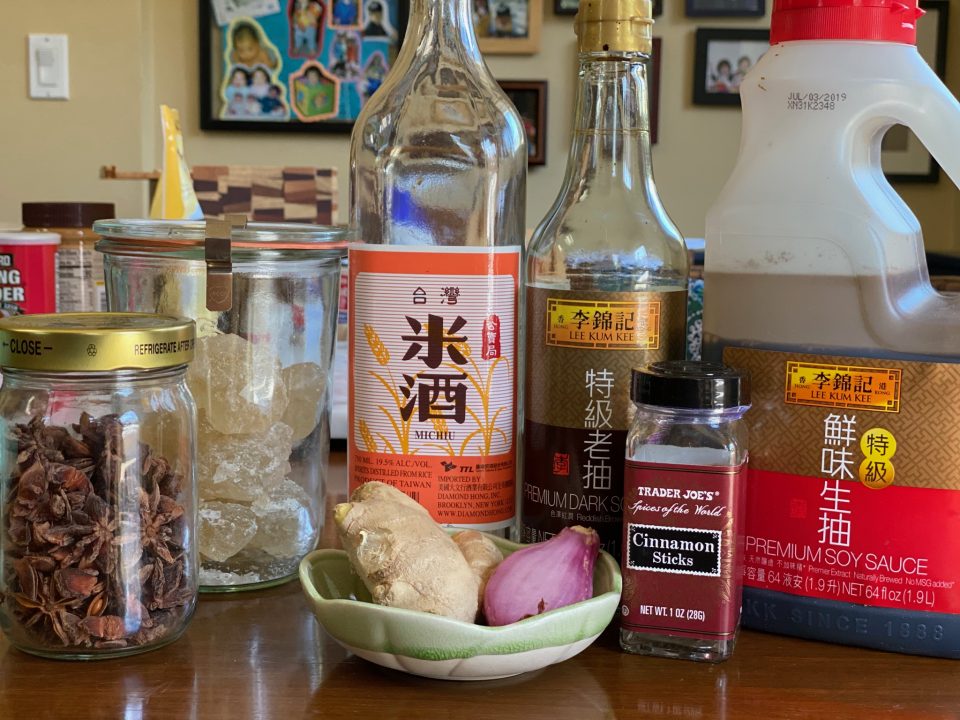
The dark soy adds not only sweetness but color. The skin turns a beautiful mahogany brown. The regular soy sauce adds saltiness and flavor. The original recipe calls for green onions, I didn’t have any, so I used shallots instead. You definitely need a member of the allium family.
The result is tender, juicy, chicken that is sweet, salty, and spicy from the star anise and cinnamon. It’s delicious. Serve the chicken with simply prepared greens and either rice or noodles. Drizzle with the poaching liquid and BOOM dinner is served. Enjoy!
Soy Sauce Chicken (See Yau Gai)
Ingredients
- 1 whole chicken ~4 pounds; fresh
- 1 T oil
- 7 slices ginger smash lightly to release flavor
- 2 scallions cut into 3-inch pieces and smashed flat
- 3 star anise I use 1-2 only
- 1 ½ cups Chinese Rice Wine aka shaoxing wine
- 1 ½ cups soy sauce reg Kikkoman would work
- 1 1/4 cup dark soy sauce or dark mushroom soy sauce
- 1 cup sugar plus 2 tablespoons Can substitute rock sugar or brown sugar for 1/2 of amount
- 2 teaspoons salt Kosher salt, if using diamond increase to 1 T
- 10 cups water
- 1-2 cloves optional
Optional spices
- 2 cloves garlic peeled and smashed
- 1/2 stick cinnamon
- 1/4 tsp fennel seeds reduce star anise to 1 piece if using
- 1-2 large shallots, sliced in place of green onions and garlic, sheltering in place-mother of invention!
Instructions
- Take your chicken out of the refrigerator before you plan to cook, let it come to room temperature. Remove the giblets, and thoroughly rinse the chicken inside and out.
- In a tall, narrow stock pot, that will just fit the chicken, (the chicken should be totally submerged in the cooking liquid) Heat pot over medium low heat add the oil. Add ginger when the oil is hot.
- Fry ginger for about 30 seconds until it begins to brown. Then add the scallions and cook another 30 seconds. Add the star anise and rice wine, and bring to a simmer to let some of the alcohol cook off. Add the soy sauce, dark soy sauce, sugar, salt, and water. Bring to a simmer again and cook on low heat for another 20 minutes.
- Increase the heat to bring the liquid to a slow boil (i.e. a little stronger than a simmer, but not a rolling boil). Lower the chicken slowly into the pot breast side up. Make sure any air pockets in the cavity fill up completely with liquid. The chicken should be entirely submerged at this point.
- Bring the cooking liquid back to a boil and cook for about 5 minutes at medium heat, a nice rolling simmer. Next, carefully with tongs or a serving fork, lift the chicken out of the water and empty the liquid inside the cavity, which will be cooler than the liquid surrounding the chicken. Lower the chicken back into the pot, making sure once again to fill the cavity. If the chicken is not completely submerged, periodically baste the exposed area with cooking liquid.
- Bring the liquid back up to a simmer, which should take about 10 minutes. Keep it at this slow simmer (the liquid will be about 210 degrees F) for 25 minutes. Turn off the heat, cover the pot, and let the chicken sit in the pot for another 15 minutes. Transfer the chicken to a cutting board. You can test the chicken, should be about 165 degrees F.
- Use the sauce from the pot to occasionally baste the chicken and keep the skin moist as it cools. Serve over rice with some sauce from the pot!
Chicken Pieces
- Don't want to poach an entire chicken?
- This is enough poaching liquid to poach 4 chicken breast or 4 whole legs or 6 thighs. Follow directions up until putting the chicken into the liquid. Place chicken pieces in liquid. Bring it back to a boil. Lower heat so you have a nice energetic simmer going.. Cover and simmer for 10 minutes. Turn heat off and allow the chicken to sit covered for 20-25 minutes depending on size of pieces.That's it, enjoy!


